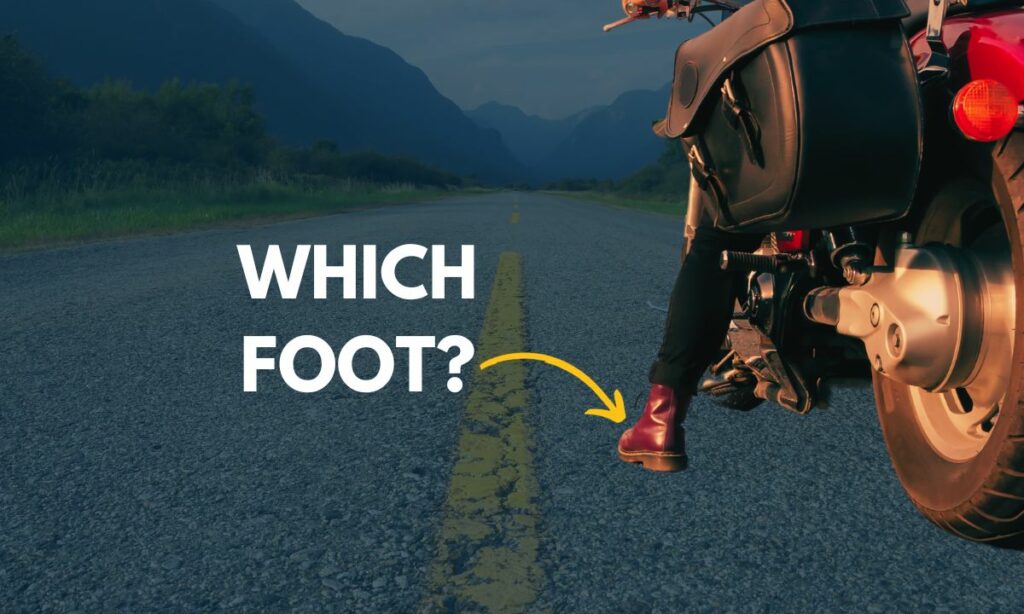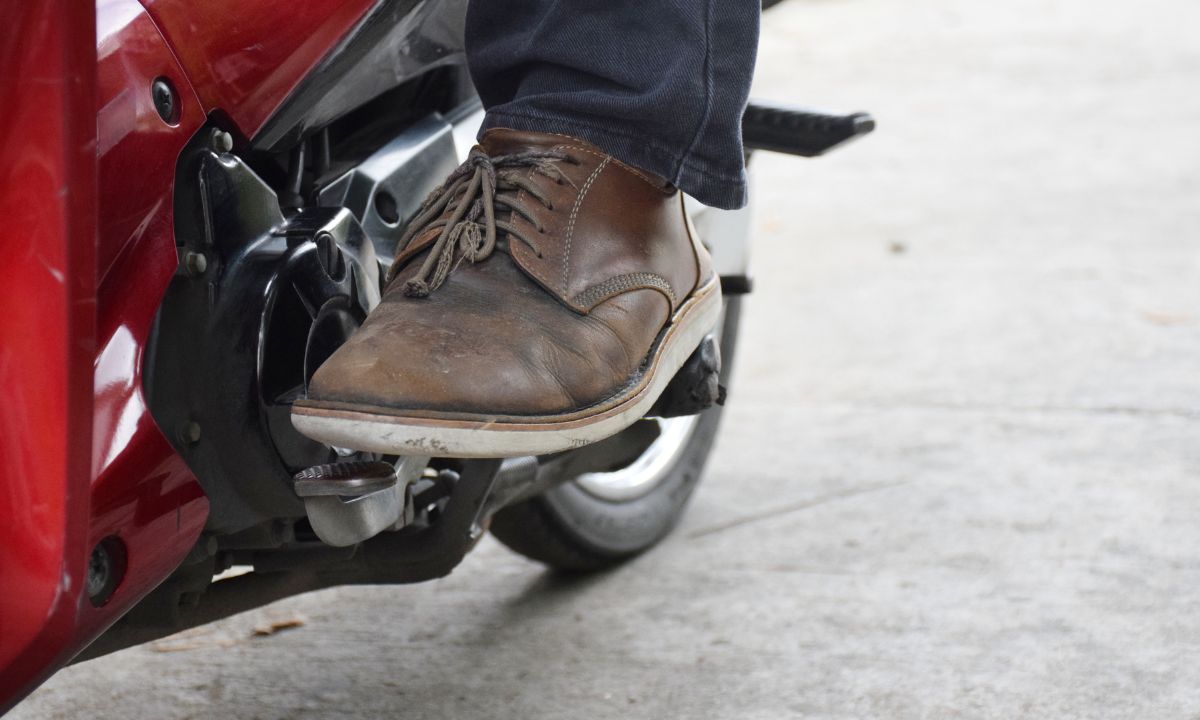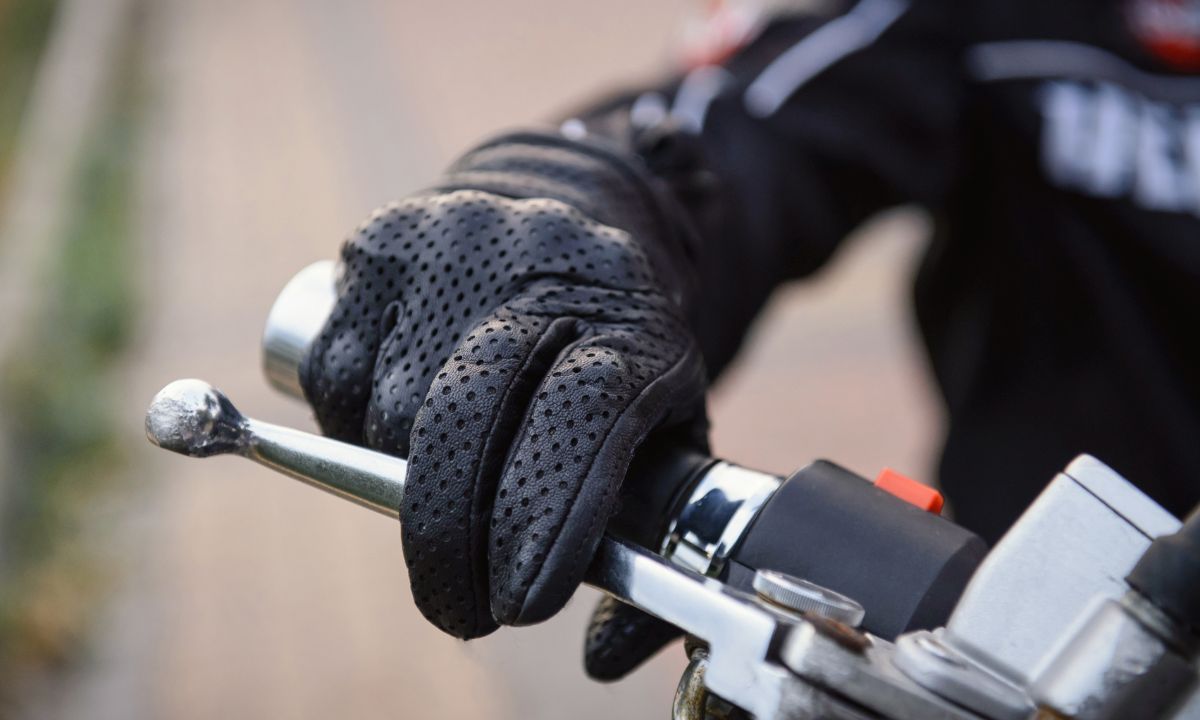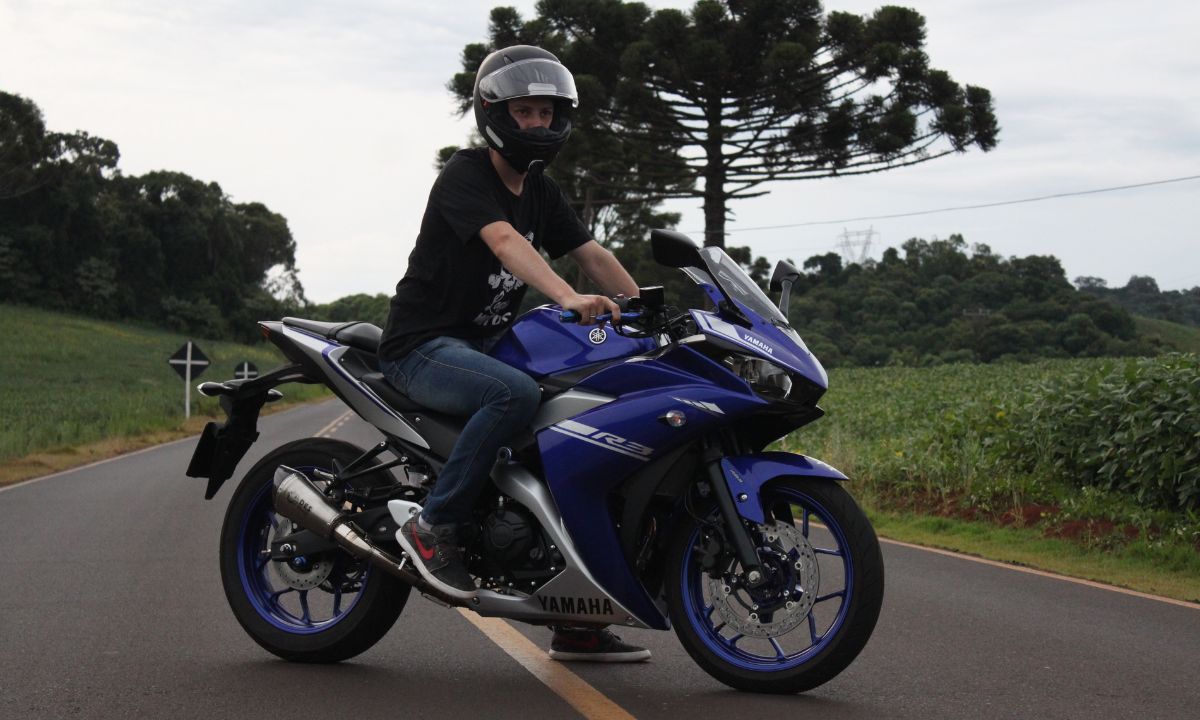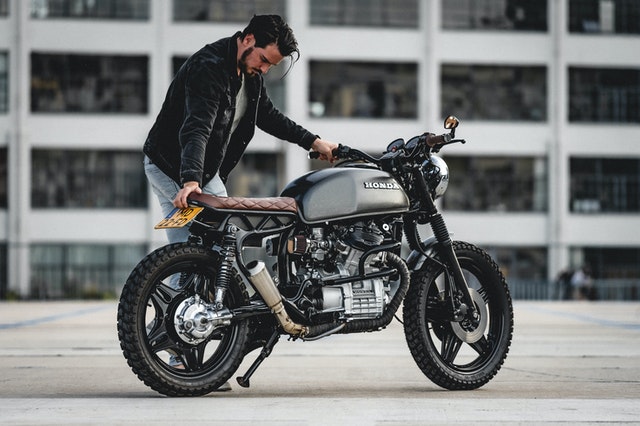Left foot. Right foot. Or both feet.
When I was a beginner rider, I always was confused which foot to put on the ground first.
I thought both feet made sense. But it wasn’t so.
So which foot to put down when stopping a motorcycle?
Put the left foot down on the ground while stopping the motorcycle. The right foot should be applying the rear brakes.
If you are about to lose the motorcycle balance, then you can put both feet on the ground.
This is assuming you have slowed down the motorcycle and are about to halt. Only then you can place a foot on the ground.
Not while the motorcycle is still at speed. That would be foolish.
Which foot to put down when stopping the motorcycle?
While stopping the motorcycle, use both brakes and only put down the left foot on the ground.
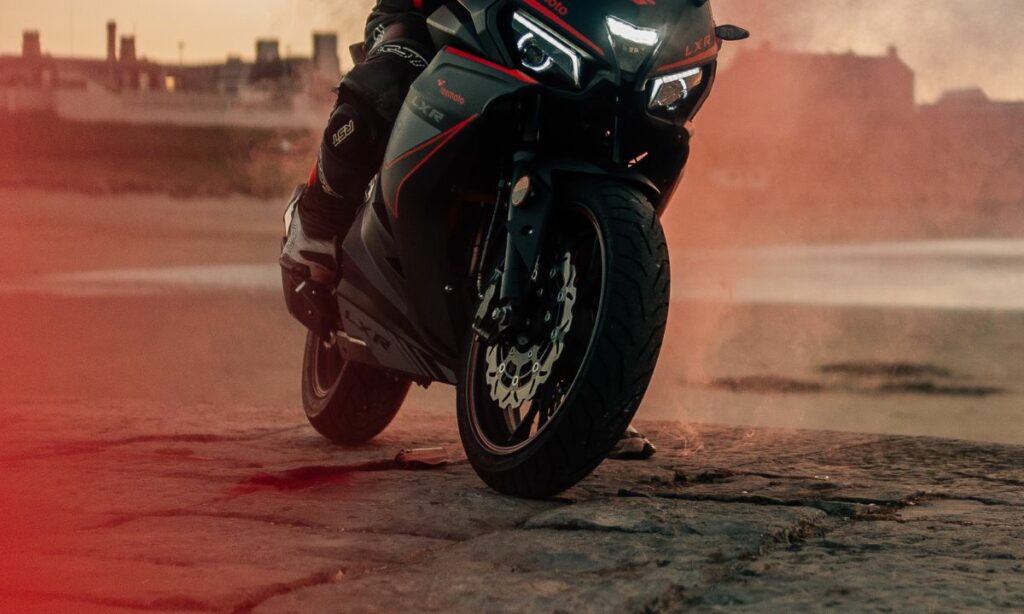
The right foot should be pressing on the rear brakes. Not on the ground.
Only once the motorcycle has completely halted, you can place the right foot down.
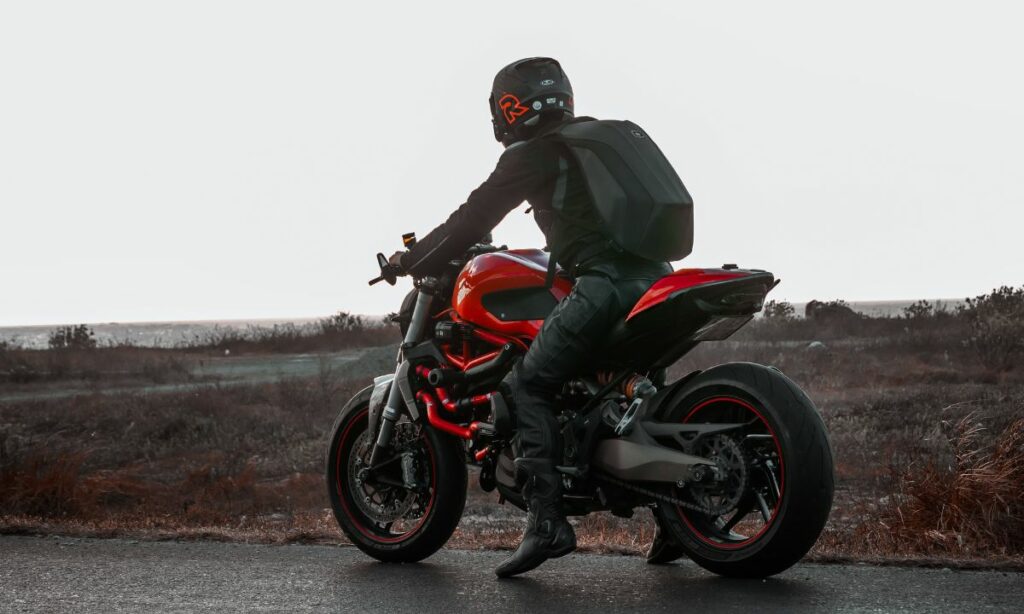
Both the feet are on the ground now.
Post that, you can shift down the gears to neutral or the first gear depending on your preference.
Then place your left foot back to the ground again.
In short, put the left foot on the ground while stopping the motorcycle. The right foot should be pressing the rear brake.
One foot down or two feet down?
One foot down, that too left foot, is the way while stopping a motorcycle.
The only exception is if you are losing the balance of your motorcycle. Then you can place both feet down on the ground.
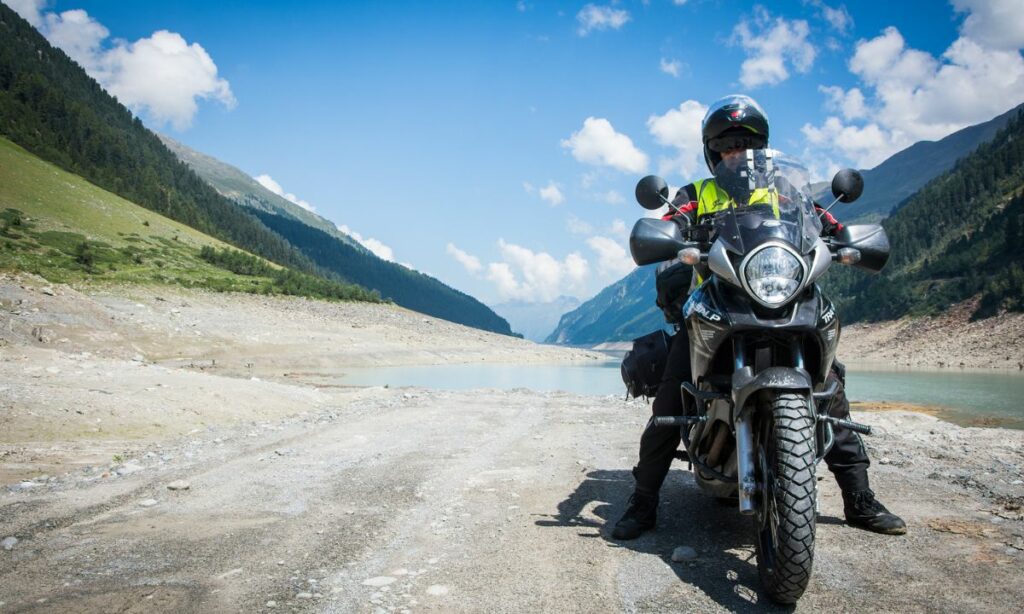
Else, one foot it is.
Oftentimes, beginner riders put both feet down on the ground while halting their bikes.
And use only the front brakes to stop the motorcycle.
I did that too.
This is a bad practice.
Try to use the right foot to apply rear brakes while stopping.
And only place the left foot down on the ground.
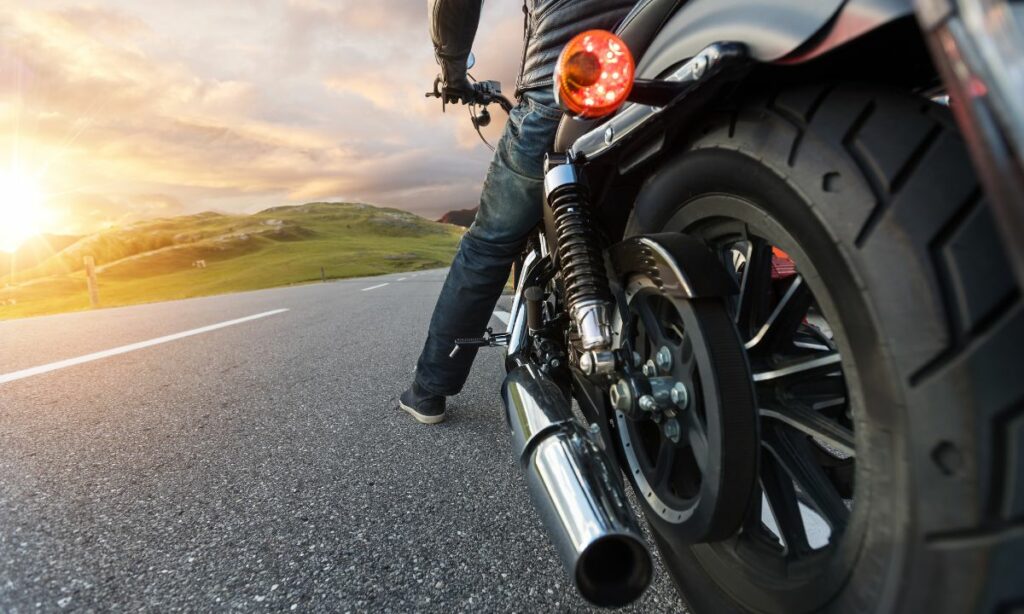
The right foot should come down after the bike is stopped. Not before.
Having said that:
If you are a newbie, do NOT obsess over these details.
If you are comfortable with both feet down on the ground while stopping the motorcycle, that’s totally fine.
Especially in traffic.

Don’t obsess over these details.
You will slowly lean to drag the left foot. And in no time, place only one foot on the ground.
Does which foot to stop matter?
Short answer. Yes, which foot you use to stop the bike matters.
Long answer:
On a motorcycle, the left foot will be pressing on the gear shifter, and the right foot will be pressing on the rear brake.
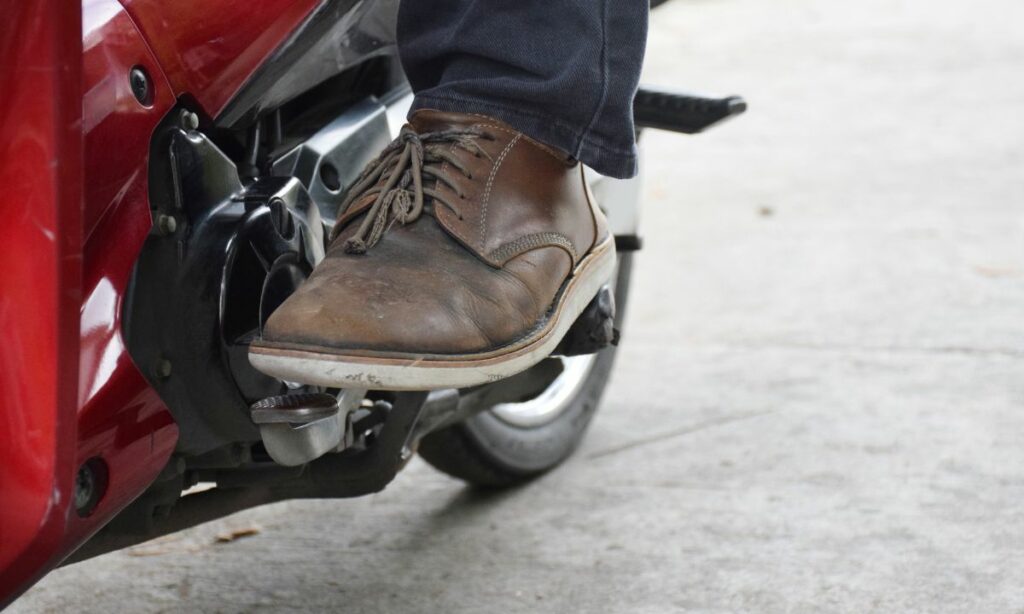
If you want to stop the motorcycle, you should use both the front brake (with your right hand) and the rear brake (with your right foot).
Since the right foot will be busy pressing on the rear brake, you can put the left foot on the ground for balance.
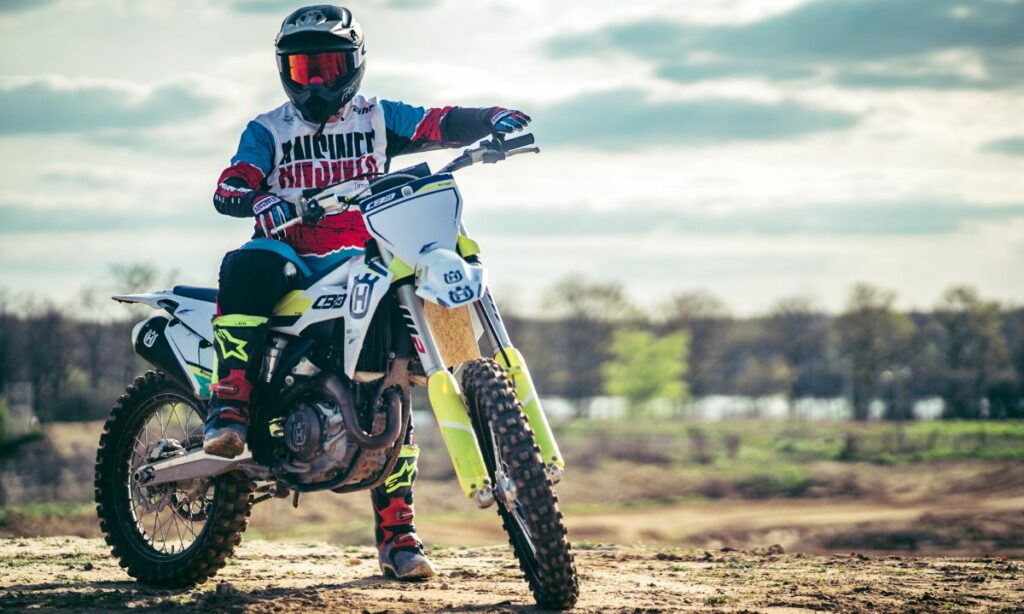
Applying the rear brake for some time and then applying the front brake with both feet on the ground is okay. But the above method is the best.
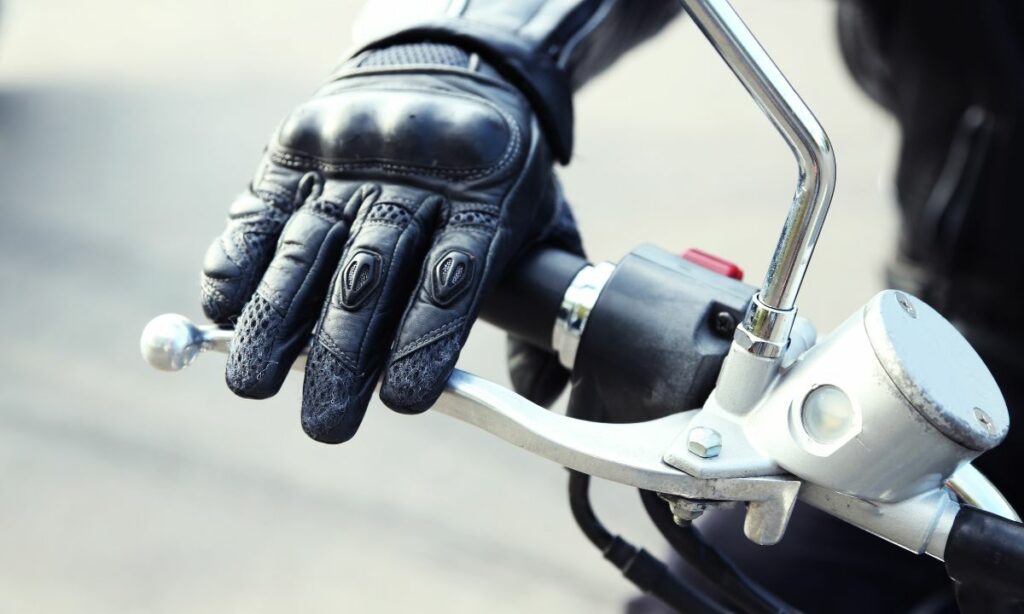
Lastly, putting only the right foot on the ground while stopping the motorcycle is an absolute no-no.
To round up:
Left foot on the ground > Both feet on the ground >> Right foot on the ground
That should be the order of preference on which foot to place on the ground first.
Why not the right foot?
Sigh.
We have already been through this. But here is the explanation.
Putting the right foot on the ground first is not the best way to halt the motorcycle.

Why not?
Because the right foot should be pressing the rear brake. Not dragging on the ground.
You can say, you will use the front brake.
Using only the front brakes is not a good way to stop the motorcycle. Unless absolutely necessary.
Use the rear brakes more.
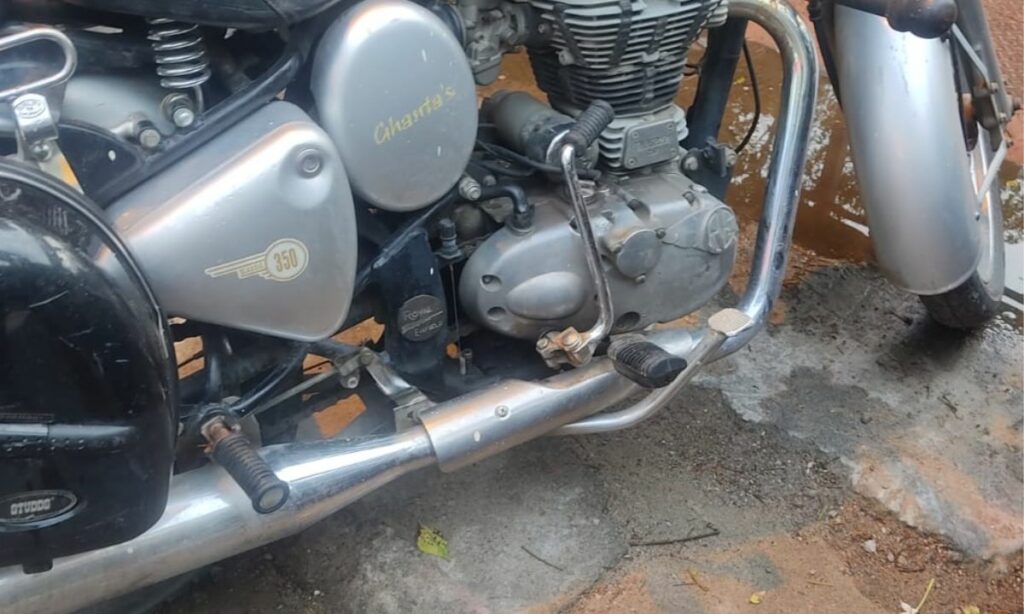
And you need your right foot for that.
That’s why, the right foot should not be on the ground while stopping a motorcycle.
What is the correct way to stop a motorcycle?
If all the above explanations feel confusing, follow these below steps to stop a motorcycle.
Steps to stop a motorcycle
- Slow down
Roll down the throttle. Slow down your motorcycle. This is the start.
- Shift down the gears
If you are riding your motorcycle on higher gears, shift down. Pull the clutch in. Use the left foot to change the gears. Shift down to the first or the neutral gear.
- Apply brakes (both rear and front brakes)
You can start applying brakes from the start itself. If it’s an emergency stop, apply the brakes hard. If not, take your time. But apply both the rear and front brakes. Use the rear brake more if possible.
- Put the left foot on the ground to balance yourself
Once the motorcycle is about to stop, put the left foot down on the ground. This gives you a better balance. Bot for yourself and to the motorcycle.
- Motorcycle stops completely
The motorcycle will halt. Now you can put both feet on the ground.
- Take off the key and park the motorcycle
Once the motorcycle is stopped, take off the ignition key. If you are parking, roll the kickstand down.
For emergency stopping:
Pull in the clutch. Roll down the throttle. Apply both the front and rear brakes hard.
That should stop the motorcycle fast.
Under normal circumstances, use the previous steps to stop the motorcycle slow and easy.
What about the dominant foot?
Dominant foot does NOT matter at all in stopping a motorcycle.
My right foot is the dominant foot. But it has no implications on how I stop my motorbike.
I follow the exact steps above to stop my motorcycle.
Put my left foot on the ground first.
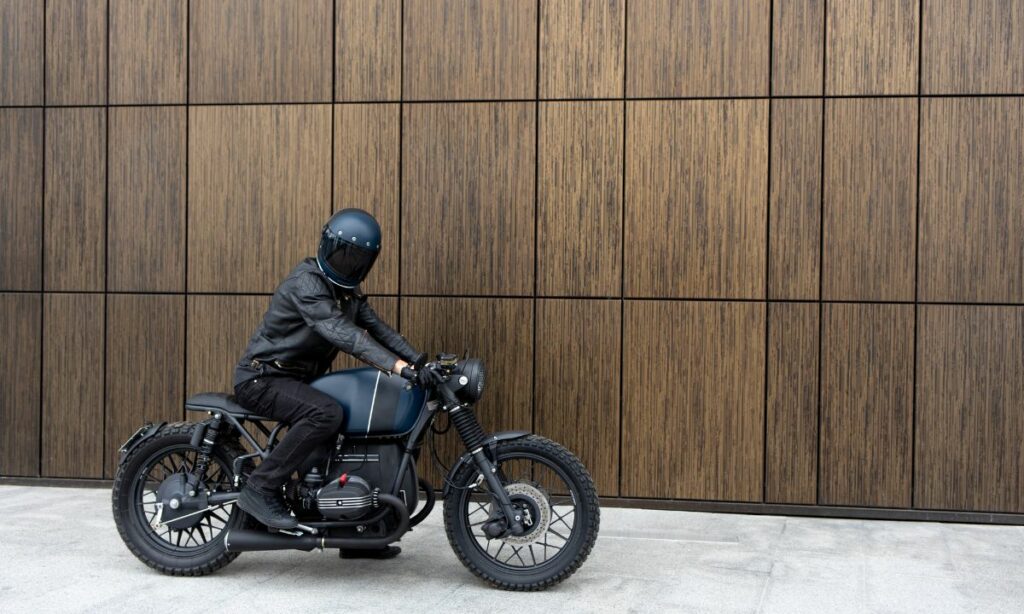
Once the motorcycle stops, I put both feet on the ground.
So, the dominant foot has no role to play in stopping a motorcycle.
Which brake to apply first on a motorcycle?
Front brake or the rear brake.
Usually, the rear brake should be the first brake to apply when stopping or slowing down a motorcycle.
But if there is an emergency stop, where you need to halt the bike abruptly, the front brake comes in handy.

Of course, using both brakes is better.
But I would say, under normal circumstances, use rear brakes more. That is the best practice.
Proper foot placement while motorcycle riding
Here is the proper hand and foot placement while riding a motorcycle:
- Right foot on the rear brake
- Left foot on the gear shifter
- Right hand on the throttle and front brake
- Left hand on the left handlebar and clutch lever
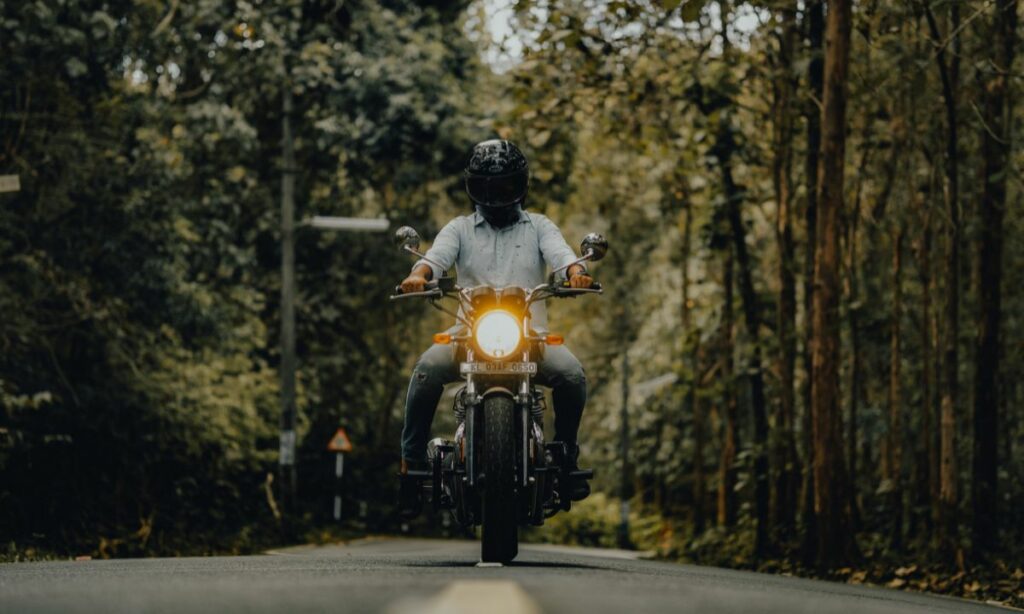
Your left foot on the gear shifter should be ready to shift the gear down at any moment.
Your right right must be able to apply the front brakes easily. Don’t be too focused on the throttle.
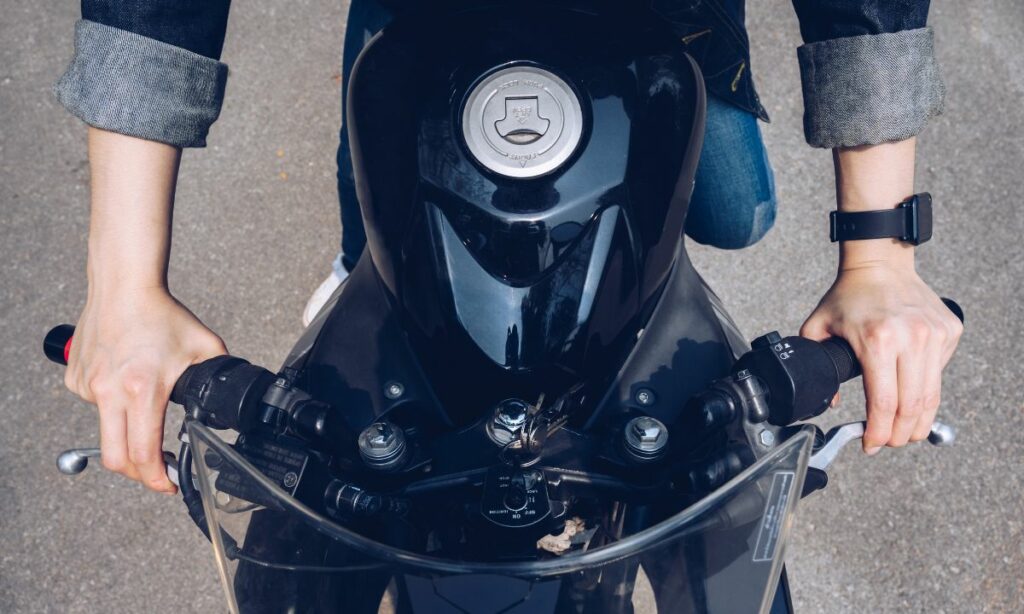
The left hand is easy. There is only the clutch lever. You need to grip the left handlebar to balance your motorcycle. But pulling in the clutch should come naturally.
Before you go…
Here are a few more posts from us that might be of interest to you:
